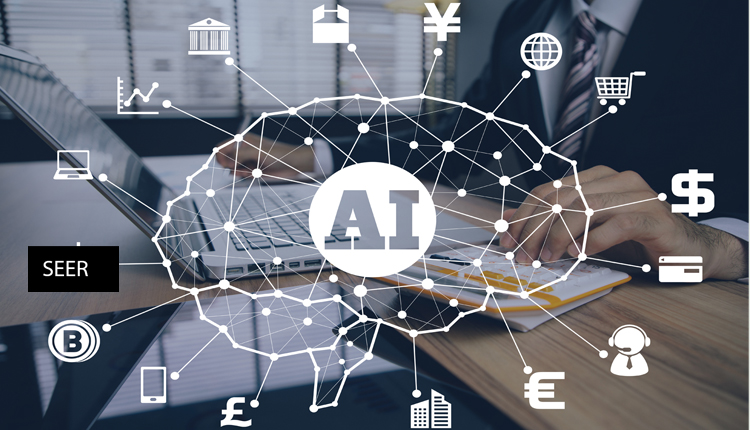The Power of Artificial Intelligence and Automation to Elevate Your Business
In the dynamic landscape of today's business world, staying competitive and efficient is paramount. Enter artificial intelligence (AI) and automation, two transformative technologies that have the potential to revolutionize the way businesses operate. In this comprehensive guide, we'll explore how to leverage AI and automation to streamline processes, enhance customer experiences, and drive growth.
Understanding AI and Automation: A Brief Overview
Artificial Intelligence (AI) involves the simulation of human intelligence processes by machines, particularly computer systems. AI technologies include machine learning, natural language processing, and computer vision, all of which enable machines to perform tasks that traditionally required human intelligence.
Automation, on the other hand, involves the use of technology to perform tasks with minimal human intervention. It aims to replace repetitive, time-consuming processes with efficient, error-free solutions.
Benefits of AI and Automation in Business
Enhanced Efficiency and Productivity: Automation eliminates manual tasks, freeing up human resources for more strategic and creative work. AI, with its ability to process vast amounts of data quickly, speeds up decision-making processes.
Improved Accuracy and Reduced Errors: Machines, unlike humans, do not suffer from fatigue or distractions. This leads to greater accuracy and fewer errors in processes.
Data-Driven Insights: AI can analyze large volumes of data and provide actionable insights, helping businesses make informed decisions and predictions.
Cost Savings: Automation and AI technologies can significantly reduce labor costs associated with repetitive tasks, leading to increased cost efficiency.
Enhanced Customer Experiences: AI-powered chatbots and virtual assistants provide customers with quick, personalized responses, improving customer satisfaction.
Innovation: AI-driven insights can spark innovation by identifying opportunities, predicting trends, and suggesting new approaches.
Areas to Implement AI and Automation in Your Business
Customer Service and Support: AI-powered chatbots can handle routine customer inquiries, provide 24/7 support, and escalate complex issues to human agents.
Data Analysis: AI can process and analyze large datasets to uncover patterns, trends, and insights that can inform business strategies.
Personalized Marketing: Automation allows businesses to send targeted and personalized marketing messages to specific customer segments based on behavior and preferences.
Inventory Management: Automation can optimize inventory levels, reduce stockouts, and enhance supply chain efficiency.
Human Resources: AI can streamline the recruitment process by analyzing resumes and identifying the most suitable candidates for positions.
Predictive Maintenance: Automation can monitor equipment and predict maintenance needs, reducing downtime and improving operational efficiency.
Implementing AI and Automation: A Step-by-Step Approach
Assess Your Needs: Identify areas of your business that would benefit from AI and automation. Prioritize processes that are time-consuming, error-prone, or repetitive.
Research Solutions: Explore AI and automation tools and platforms that align with your business goals. Consult with experts and gather insights on the best-fit solutions.
Data Preparation: Ensure your data is clean, accurate, and well-organized. AI systems rely on high-quality data for accurate analysis and predictions.
Integration: Implement the chosen AI and automation solutions into your existing systems. This may involve training your team or integrating new tools.
Testing and Optimization: Pilot the solutions and assess their effectiveness. Continuously optimize and refine the processes based on feedback and outcomes.
Employee Training: Train your employees on how to use and interact with the new AI and automation tools. Highlight the benefits they bring to their roles.
Monitoring and Maintenance: Regularly monitor the performance of AI and automation systems. Update and maintain the solutions to ensure they continue to meet your business needs.
Addressing Challenges and Concerns
Job Displacement: The introduction of automation and AI may lead to concerns about job displacement. However, these technologies often create new roles focused on managing and optimizing these systems.
Data Privacy and Security: AI and automation require access to sensitive data. Implement robust data security measures to protect your business and customer information.
Integration Complexity: Integrating new technologies with existing systems can be complex. It's important to ensure compatibility and provide adequate training.
Conclusion
AI and automation are not futuristic concepts; they are here to reshape the way businesses operate. By embracing these technologies, you can elevate your business's efficiency, accuracy, and customer experiences. As you embark on this transformative journey, remember that thoughtful planning, strategic implementation, and ongoing monitoring are key to reaping the full benefits of AI and automation in your business. The future of business belongs to those who harness the power of innovation to drive success.









